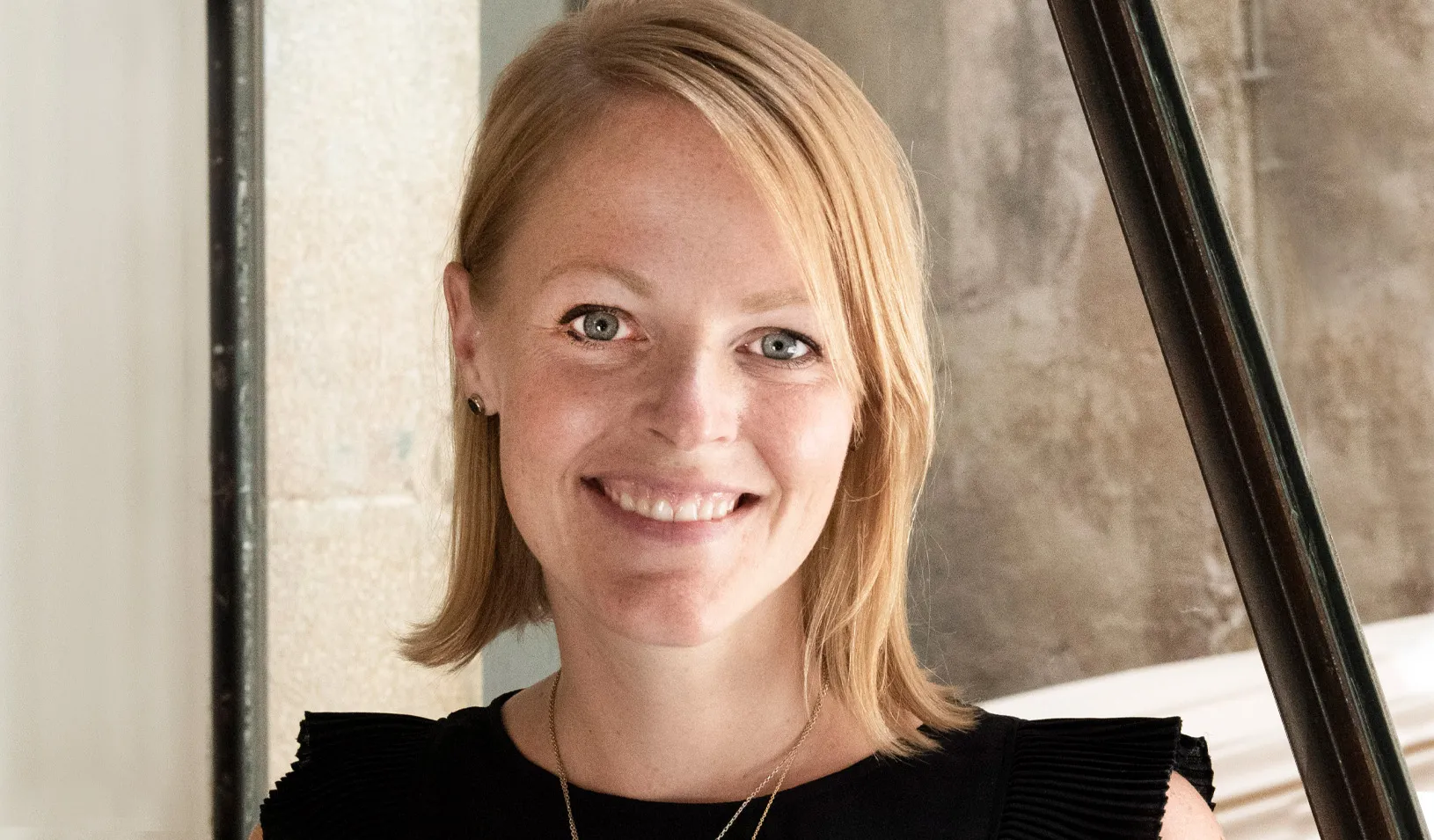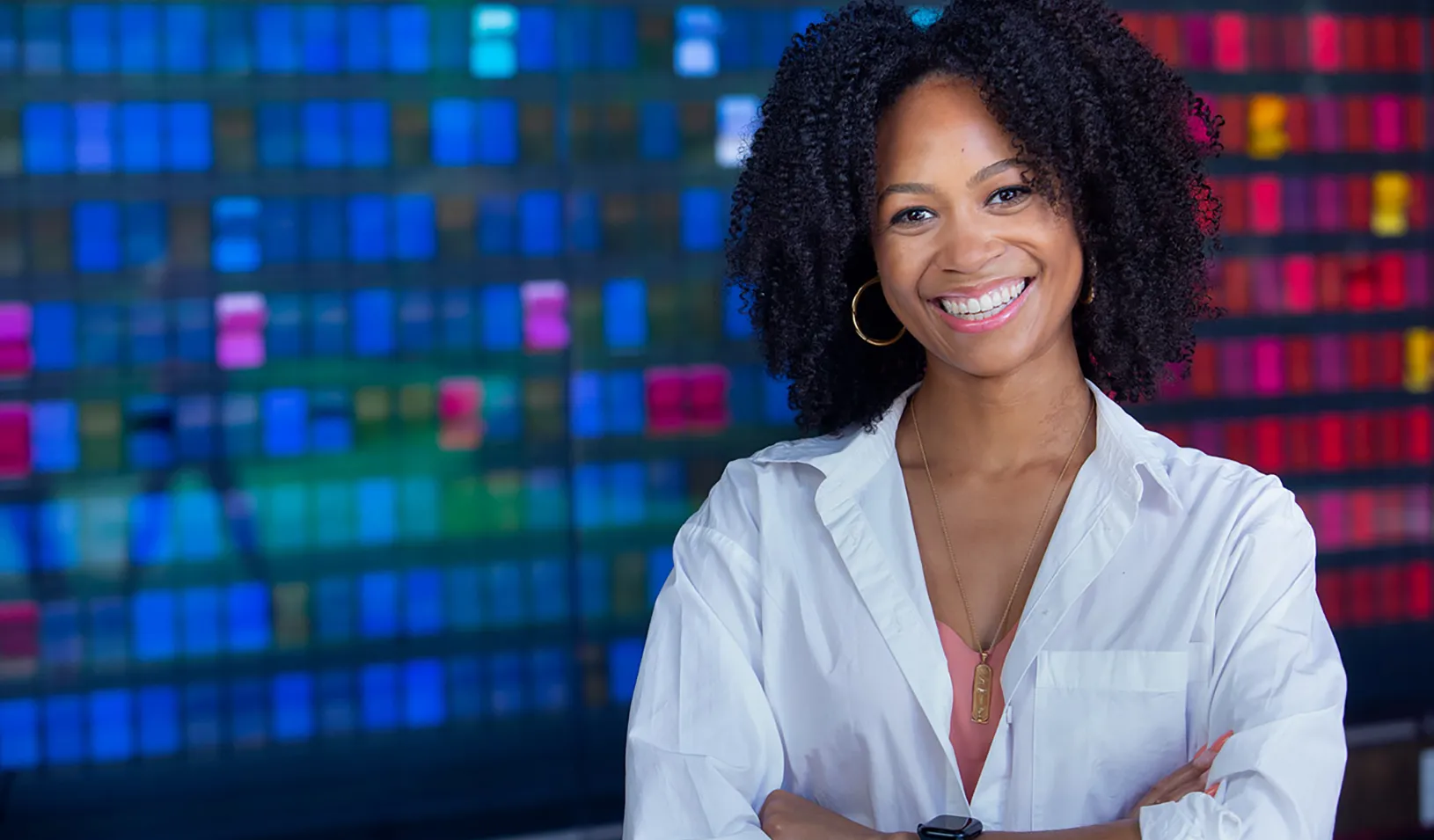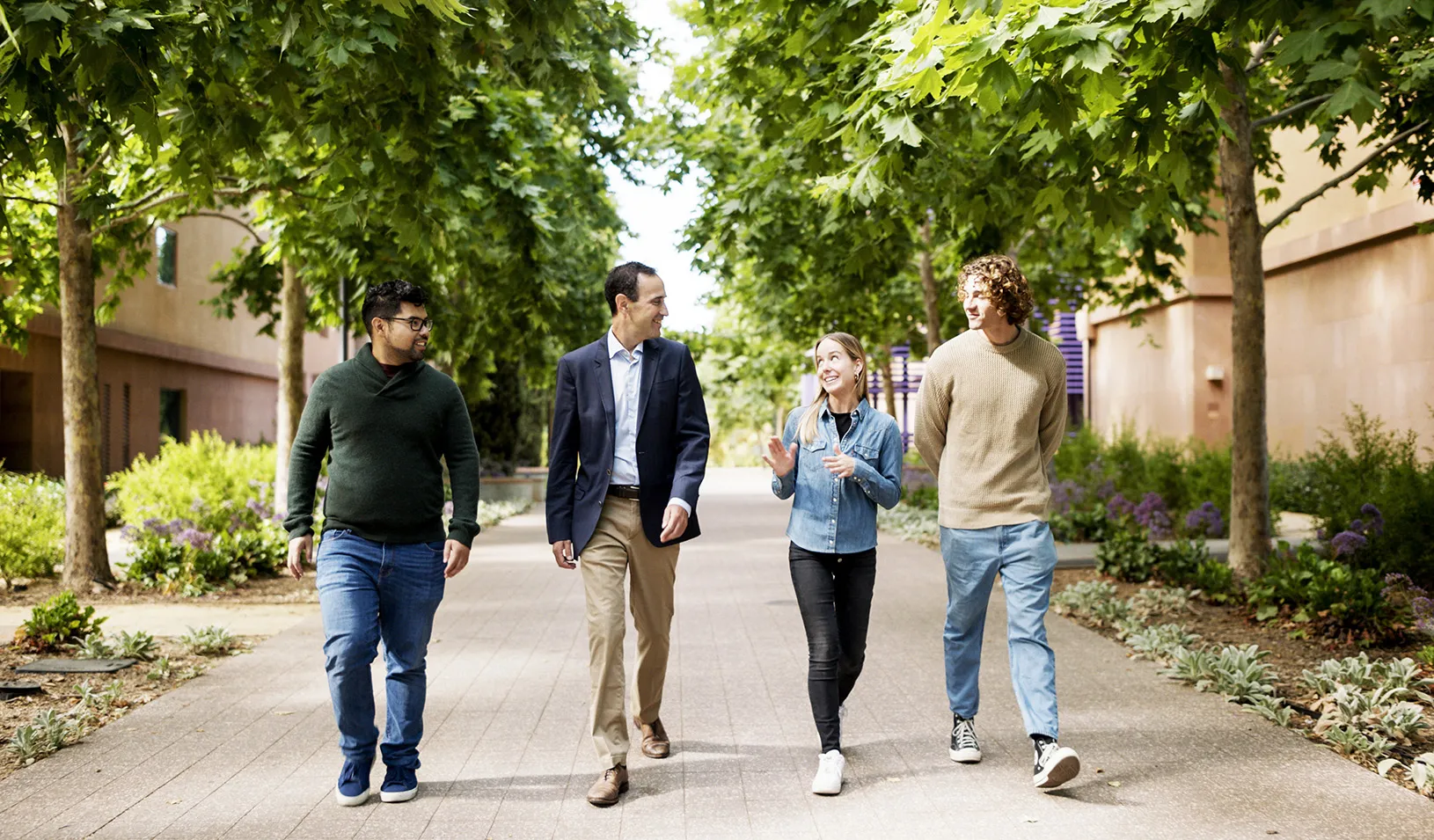Biodesign Course Teams MBAs, Doctors, and Engineers
Three real-world products have been born as biodesign class projects since the business school joined the cross disciplinary program in 2004
July 01, 2010
Andy Katz-Mayfield, MBA ‘11, has a resume that highlights his time with national consulting and equity investing firms. Danielle Weiss, a physician, recently completed a fellowship in endocrinology at Stanford Hospital and Clinics.
In the normal flow of life on the Stanford University campus, there was little chance that their paths would ever cross. And it certainly wasn’t likely that they would end up spending hours in a lab that resembled a high-tech kindergarten playroom, debating the best way to manufacture plastic tubing.
But that’s exactly what happened when the two scholars enrolled in the cross-disciplinary Biodesign Innovation course.
Offered jointly by the Stanford schools of business and medicine — plus the departments of mechanical engineering and bioengineering — the course simulates the business world where medical doctors, engineers, and MBAs must learn to speak one another’s language in order to find answers to stubborn health problems.
Three real-world products have been born as biodesign class projects since the business school became involved with the program in 2004, yet creating companies isn’t the program’s top goal, said Stefanos Zenios, a member of the business school faculty who co-teaches the course with Paul Yock, the Martha Meier Weiland Professor of Medicine, and Todd Brinton, a clinical assistant professor of medicine (cardiology).
“We are teaching students the process of innovation,” said Zenios, the Charles A. Holloway Professor of Operations, Information and Technology. “It is important for us to educate students about how to identify medical needs, invent solutions for those needs, and determine if the solutions are commercially viable. Whether they actually create a business is inconsequential. Being able to analyze that process is what matters the most.”
Earlier this year, Zenios matched Weiss and Katz-Mayfield with other team members, based on their academic training: All had some previous experience in medicine or health care.
Julia Rasooly has two master’s degrees from Stanford, one in bioengineering (‘08), a discipline that seeks to advance human health, and the other in medicine (‘10). Mechanical engineering student Zaafir Kherani, MA ‘11, possesses an entrepreneurial spirit, a keen interest in medicine, and a desire to bridge the gap “between doing research in a lab and actually being able to take those results forward into the commercial world.”
Initially, the group appeared no different from the other biodesign teams. However, they soon exhibited some distinctive qualities.
While many student teams select projects in popular areas that are already crowded with entrepreneurial activity, this contrarian group chose peritoneal kidney dialysis, a method used to filter waste products from the blood of people living with kidney failure. Patients often conduct the process themselves, in their homes. It’s currently just a small portion of the overall dialysis market and an area where there has been little innovation for 30 years. “Following that path carried its own challenges, but also gave the team a better chance to create something new,” Zenios said.
The team’s proposed product is an affordable device for home dialysis that lessens the chance of patients developing internal infections. While the class has ended, the team is continuing to work together to create a patentable product — and launch their company, CatheNect Medical.
The team recently received independent validation that they’re on the right track after winning a $10,000 prize in the Silicon Valley Boomer Venture Summit Business Plan Competition, which showcases products and services designed to benefit the health needs of people over the age of 45.
To get a sense of what makes the team tick, step into the Clark Center’s Brainstorming Room.
There, you’ll find two wall clocks — one set to Stanford time, the other set to the local time in New Delhi — a nod to young scientists from India who spent the 2009-10 academic year at Stanford as part of a fellowship program associated with the course. They are now back in India.
Written across the top of the walls are the six tenets of innovation: “One Conversation at a Time,” “Go for Quality,” “Be Visual,” “Build on the Ideas of Others,” “Stay Focused on Topic,” and “Defer Judgment.” All four walls double as floor-to-ceiling white boards where team members can jot down notes and diagram ideas gleaned from their research. A cabinet contains low-tech items that can be used to make rough product mock-ups, unexpected things including sparkly purple pipe cleaners, Play Dough, and even life-sized plastic replicas of a human spinal cord and a leg. For more advanced prototypes they can move next door to the Prototyping Studio to work with glass beakers, drills, cutting forceps, a furnace, and microscopes.
Formal coursework ranged from discussions of device regulatory rules and intellectual property guidelines to the patent application process. They also learned firsthand what patients face, with team members frequently conducting interviews at a Menlo Park clinic that teaches people how to conduct home dialysis.
With all that information in hand, the team set out to develop a better way to perform home dialysis, a journey requiring persistence and creativity.
Weiss worried that one early design might not maintain adequate suction and permit fluids to seep out. Based on her opinion, the team decided to scrap that idea.
Another proposal would have used heat to disinfect the dialysis fluid as it flowed from the storage bag through plastic tubing and into the patient’s abdomen. But that idea was also dropped based on the reaction of a panel of investors brought in to evaluate student proposals. “They were skeptical that you would actually be able to heat something up and cool it down so rapidly,” explained Kherani.
Yet another proposal showcased both the team members’ individual expertise and their willingness to learn and compromise.
The four initially wanted to develop a whole new type of plastic tubing used with compatible saline bags. While Weiss, the physician, said such a system would certainly cut down on infection by targeting bacteria commonly found on the skin surface, MBA Katz-Mayfield argued it would cost far too much compared to existing products. So, Rasooly and Kherani, the engineers, thought up a more frugal option, designing tubing less prone to transmitting infection-causing germs.
“At the end of the day, this device has got to work, but cost was certainly a consideration,” Katz-Mayfield explained.
Now the group is putting the final touches on their product, incorporating their own ideas with feedback they’ve received during the past months from patients, venture capitalists, and Stanford Hospital nephrology experts. After that, Rasooly and Katz-Mayfield will head the group’s effort to present their idea to investors.
No matter where their effort leads, Weiss says she came away from the class having learned a very important lesson: strategic planning. “Before, I’d think something was a great idea and run with it instead of being really analytical and thinking through each element and how they were all connected,” she said. “Now, I think about the future and how things might pan out, and I do that before I start running down a track.”
And, Weiss has gained a diverse set of new colleagues and experience being on a team that is perfecting a novel way to improve people’s lives. “All those things,” she said, “are successes for me.”
By Michele Chandler
For media inquiries, visit the Newsroom.
Explore More
Erin Nixon Joins Stanford GSB as Assistant Dean of Admissions

Nia Rose Froome, MBA ’23: Making Local, Fresh Food Available for All

New Research Fund Promotes Responsible Leadership for the Next Century
